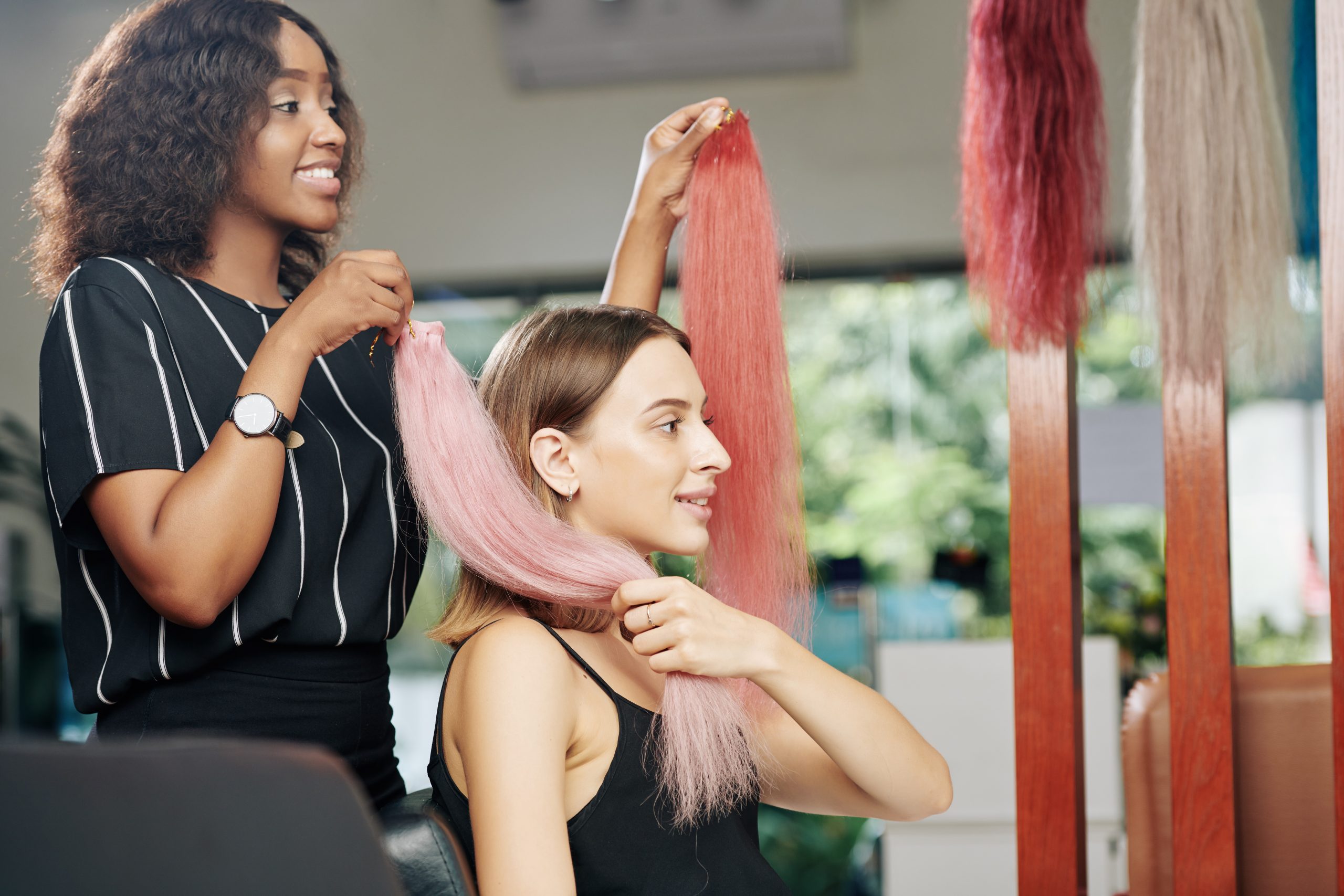Styling synthetic wigs can be an adventure, offering a world of possibilities to change your look especially if you want to try something new. However, it comes with its nuances, especially when compared to styling natural human hair wigs. Let's dive into the essentials of styling synthetic wigs, answering some common questions along the way.
Understanding Synthetic Wigs vs. Human Hair Wigs
Synthetic wigs are made from man-made fibers that are designed to mimic the appearance of natural hair. One of the key differences in styling synthetic wigs compared to human hair wigs is the reaction to heat. Traditional synthetic wigs can be damaged by heat tools, whereas human hair wigs can generally be styled just like your own hair.
- Synthetic Wigs: Traditional synthetic wigs are crafted from plastic fibers that can melt or become irreparably damaged when exposed to high temperatures. This inherent quality limits the use of heat-based styling tools. However, innovations have led to the development of heat-friendly synthetic wigs that can withstand low to medium heat, expanding the styling options. Despite this, even heat-friendly synthetic fibers have a threshold, usually recommended by the manufacturer, beyond which they can lose their texture or become damaged. Be sure to confirm that your synthetic wig can be styled with heat before trying!
- Human Hair Wigs: Being made from real hair, these wigs offer the closest experience to styling your natural hair. They can generally withstand heat from dryers, curling irons, and straighteners, making them highly versatile for creating a wide range of hairstyles. This resilience to heat means you can frequently change your look without significantly impacting the wig’s lifespan, given proper care is maintained.
Read more: human hair wig vs synthetic wigs
Best Styles for Synthetic Wigs
Here are some popular and wig-friendly styles that work wonderfully with synthetic fibers, ensuring both longevity and flair.
-
- Bob Cut: A timeless choice, the bob cut offers a sleek and sophisticated look that works well with the structure of synthetic wigs. Its simplicity allows for minimal fuss and maintenance, making it an excellent option for those new to wigs.
- Layered Waves: For those with heat-friendly synthetic wigs, creating soft waves can add volume and movement. Use a low-heat curling wand and gentle finger-combing to achieve this style. It’s perfect for adding a dynamic look without excessive manipulation.
- Pixie Cut: A pixie cut wig is chic and low-maintenance. This style naturally looks great on synthetic wigs and is ideal for a bold statement that is easy to manage day-to-day.
- Half Up, Half Down: This style works well for longer synthetic wigs. Gently pull the top section of the wig back and secure it with a clip or barrette. This approach allows you to change your look without the need for heat or cutting, and it showcases the wig’s volume and length.
- Braids and Twists: Incorporating braids or twists can add a charming touch to any synthetic wig. From a simple side braid to more intricate designs, these styles are achievable without applying heat, ensuring the wig's fibers remain undamaged.
- Ponytails: High or low, ponytails are a go-to for a reason. For synthetic wigs, ensure the base of the ponytail isn’t too tight to avoid straining the wig cap. This style is versatile and can range from casual to elegant, depending on how it’s executed.

Common Questions Asked On Wig Styling
Q: Are There Synthetic Wigs Not Meant for Styling?
A: Yes, standard synthetic wigs are not designed to withstand heat, which limits the use of curling irons, straighteners, or blow dryers. However, there are heat-friendly synthetic wigs available that can tolerate low to medium heat for more versatile styling options.
Shop for synthetic wigs that you can style.
Q: Can I dye/change the color of my wig?
A: Dyeing a synthetic wig is not recommended, as traditional hair dye and bleach will not adhere to the fibers. Some enthusiasts use fabric dyes for synthetic fibers, but this is risky and can easily result in uneven coloring or damage. For color changes, purchasing a wig in the desired shade is safer and ensures a natural look.
Q: Can I add extensions to my wig?
A: Adding extensions to a synthetic wig is technically possible, but it requires skill to blend them seamlessly. Extensions made from synthetic fibers similar to your wig can be sewn in. However, this can add weight and strain the wig cap, so it’s generally not recommended for long-term use.
Q: Can I combine two wigs together?
A: Yes, combining two wigs together is a creative way to achieve added volume, length, or even a unique color blend. This process, often referred to as "wig frankensteining," requires patience and a bit of skill. We don’t recommend this done through DIY. A professional is required for this.
Q: Can I put on hair accessories on my wig?
A: Absolutely! Accessories like headbands, clips, and hats can be used to add personality to your wig. Ensure accessories are not too tight, to avoid damaging the wig cap or fibers. Lightweight clips and pins can secure accessories without pulling on the wig. Make sure you don’t wear anything too heavy that can pull the fibers off the wig cap.
Synthetic Wig Styling and Maintenance Tips
When doing your styling, it is important to consider preventive measures because there are damages to your wig which are irreversible. You don’t want to be throwing away a perfectly good wig just because of a styling experiment gone wrong.
- Avoid High Heat: If not using a heat-friendly wig, avoid all forms of high heat. Opt for cool styling methods or low-heat settings if the wig can tolerate it.
- Use the Right Products: Utilize wig-specific products for styling to ensure the fibers remain intact and looking natural. Fibers that get off from the cap will make the overall wig look disheveled.
- Gentle Handling: When detangling, use a wig brush and work slowly to prevent pulling out fibers.
- Regular Washing: Keep the wig clean according to the manufacturer's instructions, using wig-safe shampoos and conditioners.
Styling synthetic wigs provides a fantastic avenue for creativity and self-expression. While it differs from styling natural hair wigs, understanding these differences ensures your wig remains beautiful and serves you well for as long as possible. Patience is key when doing wig styling. Wigs are delicate and will demand time and care when handling. Remember, the key to a great-looking synthetic wig is not just how you style it but also how you care for it.
